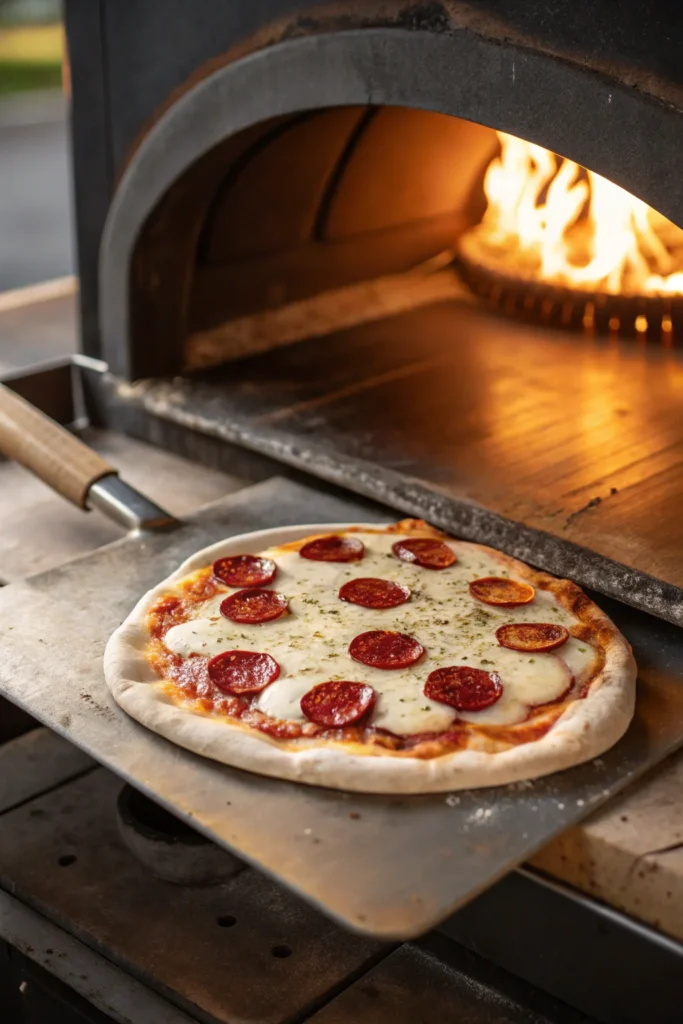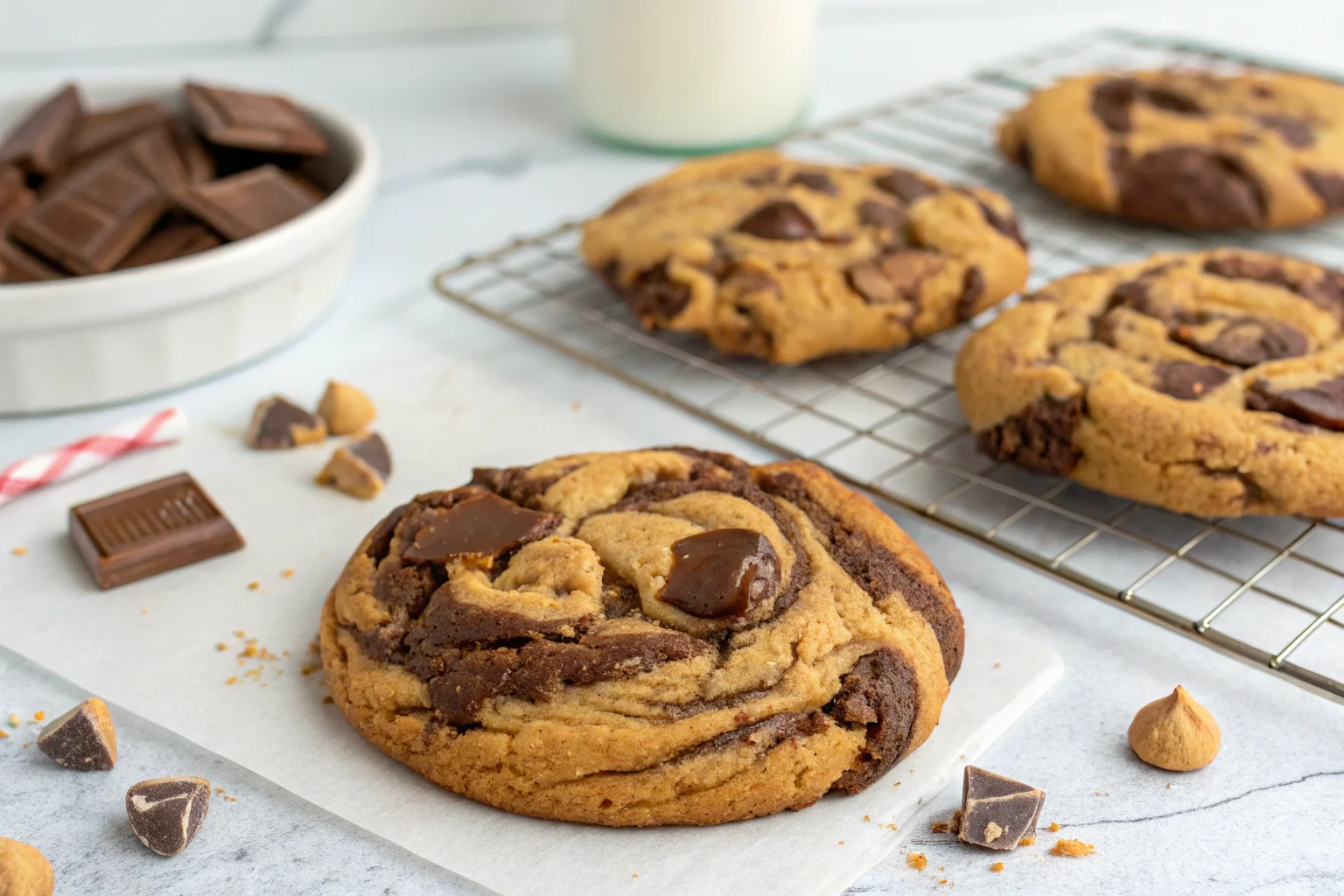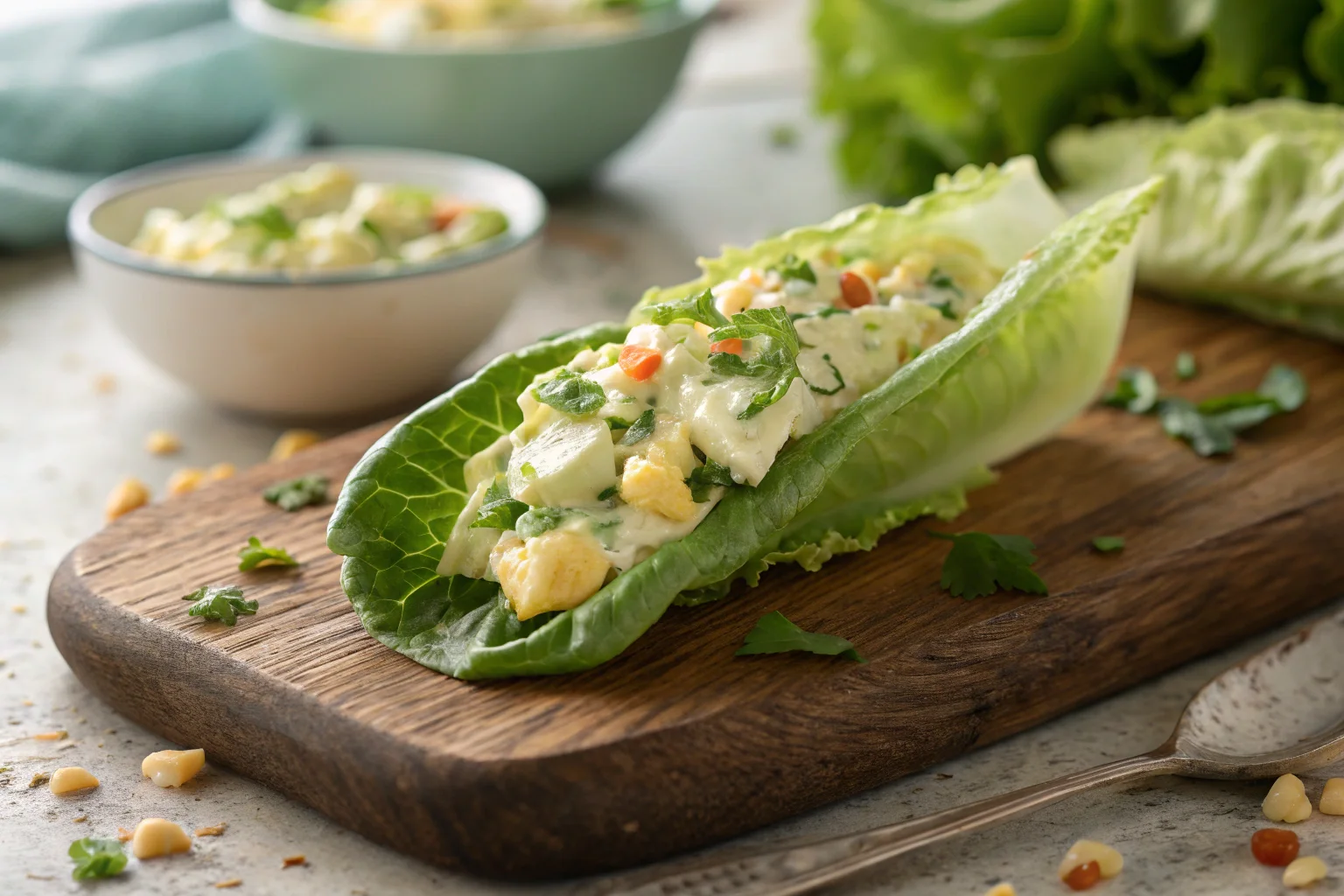Cooking a 10-inch pizza to perfection isn’t just about throwing it in the oven and waiting. The right temperature, cooking method, and even the type of dough all play a role in determining how long to cook a 10-inch pizza. Whether you’re baking a homemade pizza, reheating a frozen one, or using a pizza stone, timing is everything.
In this guide, we’ll break down the ideal cooking times for different ovens, the impact of various crust types, and tips to ensure a crispy, delicious pizza every time. We’ll also explore common mistakes and quick fixes for undercooked or overcooked pizza.
Discover the easy way to prepare 10 Inch Pizza
So, if you’ve ever asked, “How long should I cook a 10-inch pizza?”, you’re in the right place. Let’s dive in!
Table of Contents
ToggleUnderstanding Cooking Time for a 10-Inch Pizza
What Determines the Cooking Time?
The cooking time for a 10-inch pizza varies based on several factors. If you don’t pay attention to these details, you might end up with a pizza that’s either undercooked or burnt to a crisp.
Factors Affecting Cooking Time
Here’s what influences how long your pizza should stay in the oven:
- Oven Type – A conventional oven takes longer than a pizza oven or air fryer.
- Cooking Temperature – A lower temperature means a longer cook time, while a higher temperature speeds up the process.
- Crust Thickness – Thin crusts bake faster than thick ones.
- Toppings – More toppings require more time to ensure even cooking.
- Dough Type – Fresh dough takes longer than pre-made crusts.
Why Size Matters in Cooking Duration
The size of the pizza significantly affects the cooking time. A 10-inch pizza is smaller than a 12-inch or 14-inch pizza, meaning it generally takes less time to cook.
For comparison:
| Pizza Size | Average Cooking Time (400°F / 204°C, Conventional Oven) |
|---|---|
| 10-inch | 10-12 minutes |
| 12-inch | 12-15 minutes |
| 14-inch | 15-18 minutes |
If you’re cooking a thin crust 10-inch pizza, expect it to be ready in 8-10 minutes, whereas a thick crust may need 12-14 minutes.
Why a 10-Inch Pizza Needs Specific Cooking Time
You might wonder: Why does a 10-inch pizza need its own cooking guidelines? The answer lies in the balance between heat distribution and cooking speed.
Differences Between 10-Inch and Other Pizza Sizes
A smaller pizza means:
- Faster heat penetration – It takes less time for heat to reach the center.
- Higher risk of burning – Because the surface area is smaller, crust edges can burn quickly if you’re not careful.
- Shorter bake time required – A 10-inch pizza doesn’t need as much time as a 12-inch or larger pizza.
By following the right temperature and cook time, you’ll get crispy crust, melty cheese, and perfectly cooked toppings—without burning your pizza.
Ideal Cooking Temperature for a 10-Inch Pizza
Best Oven Temperature for Cooking a 10-Inch Pizza
The cooking temperature plays a huge role in determining how long to cook a 10-inch pizza. A higher temperature means a shorter cooking time, but too much heat can burn the crust before the cheese melts.
Standard Oven vs. Convection Oven
Not all ovens are created equal. The type of oven you use will impact the ideal temperature and baking time.
- Standard Ovens (Conventional) – Most home ovens take longer to bake a 10-inch pizza because heat distribution isn’t as even.
- Convection Ovens – These ovens have a fan that circulates hot air, which helps cook the pizza more evenly and faster.
Here’s a quick temperature and time comparison:
| Oven Type | Temperature (°F) | Cooking Time |
|---|---|---|
| Standard Oven | 425°F – 450°F | 10-12 minutes |
| Convection Oven | 375°F – 400°F | 8-10 minutes |
| Pizza Oven | 600°F – 700°F | 3-5 minutes |
If you’re using a home oven, aim for 450°F (232°C) for the best results.
How Temperature Affects Cooking Time
- Higher temperatures (500°F+) cook the pizza faster but can burn the crust.
- Lower temperatures (below 375°F) take too long and might result in a soggy crust.
- Preheating your oven is essential for even baking. Never skip this step!
How to Adjust Temperature Based on Crust Type
Different crusts need different heat settings. A thin crust pizza bakes faster than a thick or deep-dish pizza.
Thin Crust vs. Thick Crust Cooking Time
- Thin Crust – Requires high heat (450°F – 500°F) and bakes in 8-10 minutes.
- Thick Crust – Needs a lower temperature (375°F – 425°F) and takes 12-15 minutes.
Preheating: Does It Matter?
Absolutely! Preheating ensures that your pizza starts cooking immediately upon entering the oven, preventing an undercooked center.
Always let your oven reach the desired temperature before placing the pizza inside. A cold oven leads to uneven cooking and a soggy crust.
Cooking a 10-Inch Pizza in Different Ovens
Cooking a 10-Inch Pizza in a Conventional Oven
A conventional oven is the most common choice for baking pizzas at home. However, since it lacks built-in fans, it requires careful monitoring to avoid uneven cooking.
Step-by-Step Instructions
- Preheat your oven to 450°F (232°C).
- Prepare your pizza – Place it on a pizza stone, baking sheet, or directly on an oven rack for a crispier crust.
- Bake for 10-12 minutes, rotating halfway through for even cooking.
- Check for doneness – The cheese should be bubbling, and the crust golden brown.
- Remove and let it rest for 2-3 minutes before slicing.
Common Mistakes to Avoid
- Placing pizza in a cold oven – Always preheat!
- Overloading with toppings – Too many toppings can result in an undercooked center.
- Not rotating the pizza – Helps ensure even cooking.
How to Cook a 10-Inch Pizza in a Pizza Oven
If you have a pizza oven, cooking times are much faster because these ovens reach extremely high temperatures.
Stone vs. Steel Baking Surfaces
- Pizza Stone – Absorbs heat, creating a crisp crust. Best for home ovens.
- Pizza Steel – Conducts heat better, reducing cooking time. Ideal for high-heat ovens.
For a pizza oven (600°F – 700°F):
- Cook for 3-5 minutes, rotating halfway for even cooking.
Cooking Time for a 10-Inch Pizza in an Air Fryer
If you’re in a hurry, an air fryer can be a game-changer.
Adjusting Time and Temperature
- Set air fryer to 375°F (190°C).
- Cook for 8-10 minutes, checking halfway.
- Let it rest for 2 minutes before slicing.
Pro Tip: To prevent the crust from drying out, brush it with a little olive oil before air frying.
Discover the easy way to prepare this delicious recipe Pizza Italia
Frozen vs. Homemade 10-Inch Pizza Cooking Time
How Long to Cook a Frozen 10-Inch Pizza?
If you’re short on time, a frozen pizza is a quick and easy option. But getting the timing right is key to avoiding a soggy crust or burnt edges.
Adjusting for Different Brands
Different brands have slightly different recommended cooking times. However, the general rule for a frozen 10-inch pizza is:
- Conventional Oven: 400°F (204°C) for 12-15 minutes
- Convection Oven: 375°F (190°C) for 10-12 minutes
- Air Fryer: 375°F (190°C) for 8-10 minutes
Always check the pizza box instructions since some brands may require a lower or higher temperature. If unsure, start with the lower end of the time range and add a minute or two if needed.
Homemade 10-Inch Pizza: Does Dough Type Matter?
Making pizza from scratch gives you full control over the ingredients and cooking time. But the type of dough you use will affect how long it takes to cook.
Fresh Dough vs. Pre-Made Dough
- Fresh Dough – Needs a slightly longer cooking time since it’s raw. Expect 10-12 minutes at 450°F (232°C).
- Pre-Made Dough – Pre-cooked crusts (like store-bought pizza bases) need less time, around 8-10 minutes at 425°F (218°C).
If you’re using thick dough, bake at a slightly lower temperature (400°F/204°C) for 12-15 minutes to avoid burning the outside before the inside is done.
How Toppings Influence Cooking Time
Toppings don’t just add flavor—they also affect how long to cook a 10-inch pizza.
The Impact of Heavy vs. Light Toppings
- More toppings = longer cooking time. The extra moisture from vegetables, meats, or extra cheese requires 1-2 extra minutes in the oven.
- Fewer toppings = faster cooking. A simple cheese pizza or margherita will cook quicker and more evenly.
If using watery toppings (like mushrooms, tomatoes, or fresh mozzarella), try pre-cooking them or blotting with a paper towel before adding them to your pizza.
Best Cooking Techniques for a Perfect 10-Inch Pizza

Baking vs. Broiling: Which One Works Best?
The way you cook your pizza makes a big difference in texture and taste. Should you bake it slowly, or use broiling for a crispier finish?
When to Use Each Method
- Baking (Recommended for Beginners) – This method cooks the pizza evenly. Set your oven to 450°F (232°C) and bake for 10-12 minutes.
- Broiling (For Extra Crispiness) – Want a crispy top layer? Bake your pizza as usual, then switch to broil mode for 1-2 minutes at the end.
If using broiling, watch carefully! It only takes seconds for the cheese to go from perfectly golden to burnt.
Should You Use a Pizza Stone or a Baking Sheet?
The surface you cook your pizza on can change how the crust turns out.
Pros and Cons of Each Method
| Cooking Surface | Pros | Cons |
|---|---|---|
| Pizza Stone | Crispy crust, even heat | Requires preheating, takes longer |
| Baking Sheet | Convenient, no preheating | Less crispy crust |
| Pizza Steel | Best heat retention, quick cook time | Heavy, more expensive |
For the best results, preheat a pizza stone or steel in your oven for at least 30 minutes before baking. This helps mimic a brick pizza oven and ensures a perfectly crisp crust.
How to Tell If a 10-Inch Pizza Is Fully Cooked?
Getting the perfect bake on a pizza isn’t just about following a timer. The actual doneness depends on the crust, cheese, and toppings. So, how do you know when your 10-inch pizza is fully cooked? Let’s break it down.

Signs of a Perfectly Cooked Pizza
Knowing when to take your pizza out of the oven can be tricky. If you pull it out too soon, you’ll have a doughy, undercooked center. Wait too long, and you might end up with a burnt crust.
Checking the Crust for Doneness
- A golden brown crust is a good sign that your pizza is done.
- The bottom of the crust should be firm and crispy—not soggy.
- If the center still looks pale, your pizza needs another 1-2 minutes.
A quick way to check? Lift the pizza slightly with a spatula and look at the bottom. It should have a lightly charred, crispy texture, especially if you used a pizza stone or baking steel.
Cheese and Sauce Indicators
- The cheese should be bubbling and slightly browned. If it’s still pale and unmelted, give it more time.
- If you see watery pools on top, your toppings may have released too much moisture. Blot it with a paper towel and cook for 1-2 more minutes.
Using a Thermometer to Check Pizza Readiness
If you want to be extra sure, a kitchen thermometer can help.
Ideal Internal Temperature
- A fully cooked pizza should reach 190°F – 200°F (88°C – 93°C) in the center.
- If using raw meat toppings, make sure they hit 165°F (74°C) for safety.
Checking the temperature is especially useful for thicker crusts since they take longer to cook.
Quick Fixes for Undercooked or Overcooked 10-Inch Pizza
Even with the best techniques, sometimes your pizza doesn’t turn out as planned. But don’t worry! Whether your pizza is undercooked in the middle or too crispy, there’s an easy fix.
How to Fix an Undercooked Pizza
An undercooked pizza is often caused by low oven temperature, too many toppings, or removing it too soon. Here’s what you can do:
Adjusting Cooking Time and Heat
- Put it back in the oven – Set the oven to 375°F (190°C) and cook for another 3-5 minutes.
- Move it to a lower rack – This helps the crust cook without burning the top.
- Use a pizza stone or steel – These help distribute heat evenly for a crispy bottom.
If the cheese is already browned but the crust is still soft, cover the top with foil to prevent further browning while the base continues cooking.
How to Rescue an Overcooked Pizza
On the other hand, if your pizza comes out too crispy or dry, don’t toss it out just yet!
Preventing Dry or Burnt Crust
- Brush the crust with olive oil or butter – This helps soften dry edges.
- Add a drizzle of sauce or cheese – A little extra sauce can bring back moisture.
- Cover with foil and bake for 1-2 minutes – This traps moisture and softens a rock-hard crust.
If your pizza is burnt, you can scrape off the top layer of cheese with a spatula. It won’t be perfect, but at least it won’t taste like charcoal!
Frequently Asked Questions (FAQ)
When it comes to making the perfect 10-inch pizza, people often have similar questions about cooking time, temperature, and technique. Below are answers to some of the most commonly asked questions.
How long should a 10-inch pizza bake at 425°F?
A 10-inch pizza typically takes 10-12 minutes to bake at 425°F (218°C) in a conventional oven. However, factors like crust thickness, toppings, and oven type can slightly alter the cooking time.
If you’re using a convection oven, reduce the temperature to 400°F (204°C) and bake for 8-10 minutes for a crispier, evenly cooked crust.
Is it better to cook pizza at a high or low temperature?
Higher temperatures (450°F – 500°F) are best for a crispy crust and evenly melted cheese. Lower temperatures (below 375°F) may lead to a soggy or doughy pizza. If using a pizza stone or steel, preheat it at 500°F for at least 30 minutes before baking.
Why is my pizza not cooking evenly?
Uneven cooking happens when:
The oven isn’t preheated properly.
The pizza is placed on a cold baking sheet instead of a hot pizza stone.
Too many toppings prevent proper heat distribution.
The oven rack position is too high or too low.
To fix this, always preheat your oven and rotate the pizza halfway through baking for even cooking.
How can I get a crispy crust on a 10-inch pizza?
To achieve a crispy crust, try these tips:
Use high heat (450°F – 500°F).
Preheat a pizza stone or baking steel before placing the pizza in the oven.
Avoid too much sauce, as excess moisture can soften the crust.
Brush the crust with olive oil before baking for a golden, crunchy finish.
Can I cook a 10-inch pizza without a pizza stone?
Yes! While a pizza stone helps with even heat distribution, you can still bake a great pizza using:
A baking sheet (preheat for better results).
A cast iron skillet for a crispy bottom.
A pizza pan with holes to improve airflow.
What’s the best way to reheat a 10-inch pizza?
For the best results, reheat your pizza using one of these methods:
Oven: Bake at 375°F for 5-7 minutes.
Air Fryer: Heat at 350°F for 3-4 minutes.
Skillet: Warm on medium heat for 3-5 minutes (cover with a lid to melt the cheese).
Avoid using the microwave unless you like soggy pizza!
Conclusion
Summary of Ideal Cooking Time for a 10-Inch Pizza
So, how long to cook a 10-inch pizza? The answer depends on the oven type, temperature, and crust thickness. Here’s a quick recap:
| Oven Type | Temperature | Cooking Time |
|---|---|---|
| Conventional Oven | 425°F – 450°F | 10-12 minutes |
| Convection Oven | 375°F – 400°F | 8-10 minutes |
| Pizza Oven | 600°F – 700°F | 3-5 minutes |
| Air Fryer | 375°F – 400°F | 8-10 minutes |
For a crispy crust, use high heat and a preheated pizza stone. If your pizza turns out undercooked or burnt, adjusting the rack position or baking time can help.
Final Tips for Perfecting Your Homemade Pizza
To make the best 10-inch pizza, keep these tips in mind:
- Always preheat your oven before baking.
- Use a pizza stone or steel for an even, crispy crust.
- Don’t overload with toppings—too much can cause uneven cooking.
- Experiment with broiling for a perfectly browned top.
- Rotate the pizza midway through baking for even heat distribution.
With these tips and techniques, you’ll never have to wonder how long to cook a 10-inch pizza again!









